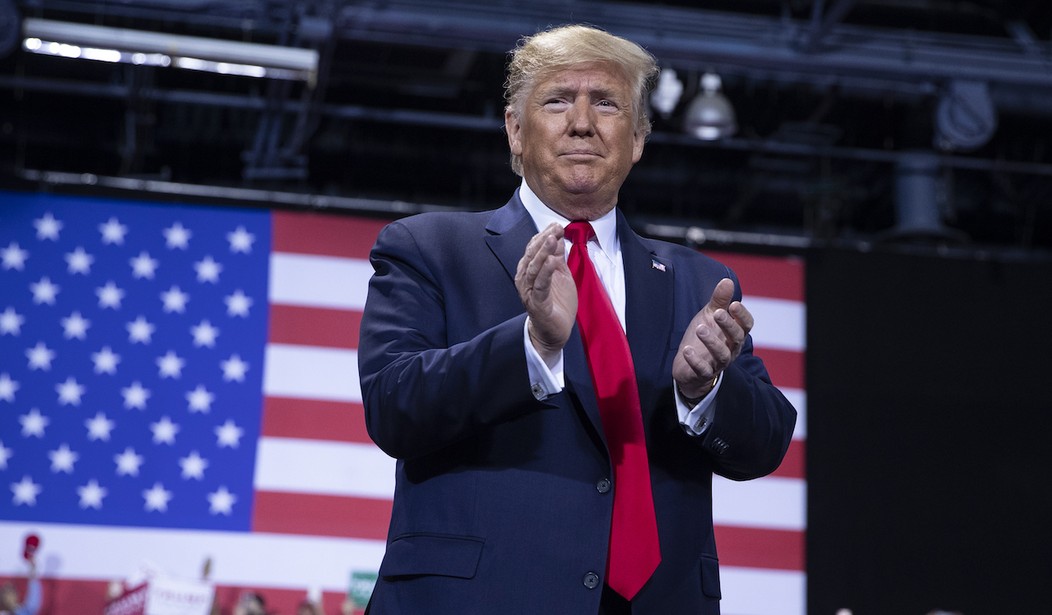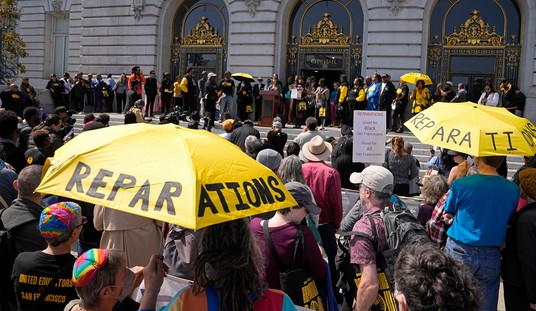In recent days, the mainstream media has begrudgingly admitted what has been clear to the American people for some time: President Trump’s economic boom with the strongest jobs market in a generation is lifting up middle and working-class Americans. Most notably, nonsupervisory workers have enjoyed 3.7% wage growth over the past year vs 3% for all workers. Similarly, for several years now, workers in the bottom earnings quartile have seen faster wage growth than those at the top, a fact Townhall readers have known since August.
Those in the establishment, the business wing of the Republican Party have claimed Trump’s tax cuts as the cause of this wage surge. However, this does not tell the whole story; Trump’s populist policies, often less popular among the establishment, particularly on immigration, are a major reason why workers are seeing the biggest raises in over a decade.
Corporate taxes are a part of every company’s cost structure, and like any other input cost, they are ultimately passed onto and paid by consumers. By cutting the corporate tax rate from 35% to 21%, corporate America saw a decline in their cost structure, pushing profit margins wider. This cost reduction has created room for labor costs to rise without companies having to raise prices, increasing consumers’ real purchasing power. In fact, core inflation, at 1.6%, is actually running lower now than when the tax cuts were signed in December 2017 even as nonsupervisory wage growth has accelerated by 1.2%.
So the Trump tax cuts have been very successful in ensuring that our strong wage gains don’t get eaten away by corresponding price increases while also cutting taxes on the vast majority of working and middle-class families. However, this does not explain why wages themselves are going up. The answer is simple supply and demand.
Every Economics 101 student learns that when there is less supply of a product, its price goes up, all else equal. No one disputes this law, but it’s conveniently forgotten when it comes to the labor market, wages, and immigration. From 1970 to today, the number of immigrants has more than quadrupled and reached the largest share of our population since World War I. In a remarkable coincidence, during this period of mass immigration, median household income largely stagnated, only recently passing its 1999 level.
Recommended
President Trump campaigned on reducing immigration and enforcing our laws, to put existing citizens first. He has kept this promise with approvals in the much-abused H-1B visa program dropping, increased border enforcement, and crackdowns on the employment of illegal immigrants. These policies mean that employers cannot merely import cheap labor and instead have to pay up for American workers. With 1.2 job openings per unemployed person, American workers finally have negotiating power.
Indeed these policies are beginning to have a clear national impact. Over the twelve months through November, the foreign-born population in the United States fell by 1% with the number employed down by 0.4%. That means American citizens have gotten every single one of the 2.204 million jobs created in the past year. Immigrant workers disproportionately work in the construction and leisure sectors, and the restricted labor supply is helping push up wages with construction employees getting more weekly hours while leisure workers are seeing 4.3% wage growth. Nonsupervisory wage growth surging to a decade high while the foreign-born labor supply contracts, yet another remarkable coincidence!
Workers see the strongest wage growth when the labor market is tight—when demand outstrips supply. In the past, immigration has often been a relief valve in our labor market, creating additional slack and keeping wages down, which is great for business owners’ profit margins but not their employees. Trump is actively doing the opposite with policies that keep the labor market tight to pressure wages higher and end two decades of income stagnation.
In other periods of tight labor markets, American companies have tried to source more products from overseas, bringing in more Chinese goods for instance, rather than pay up for American workers. However, that option isn’t viable when $360 billion of Chinese goods face 25% or 7.5% tariff. Whereas in past corporate America would first look to immigrant labor or foreign production to increase capacity rather than pay up for American workers, Trump’s policies have essentially said: hire and pay American workers to sell in the American market.
It’s no surprise then that wages are rising, particularly at the lower and middle-income levels, whose jobs were most vulnerable to these trends. At the same time, the tight labor market and rising wages incentives companies to invest in productivity enhancement to get more out of each worker they have. Sure enough, productivity growth is running at 1.4% now from 0.8% in the Obama expansion years, which increases potential wage growth.
With an immigration and trade policy mix that pushes companies to hire from the finite pool of American workers, Trump has overseen a dramatic rise in wage growth for working people, a rise that should continue to accelerate through 2020. The tax cuts have played a critical role in ensuring these wage gains aren’t eaten up by inflation but we're not alone sufficient to spur such wage growth.
To ensure this period of economic prosperity lasts well below 2020 and helps middle and working-class families catch up from two lost decades, we must continue to pursue tight labor market policies via worker first immigration and trade policy.

























Join the conversation as a VIP Member